#antaresia python
Explore tagged Tumblr posts
Text

I have not been handling Barney much and he has turned into a hungry hippopotamus demanding food literally the day after he eats. He has also decided he’s big enough to try to eat my hand (which has admittedly further reduced his handling [that and general life/home environment changes]). Le sigh. He’s still a cute lil noodle though! I also feel bad handling him when I know he doesn’t enjoy it and he gets nervous around most new things.
I’m going to start tap/hook training but I’m also going to hold myself to a better enrichment schedule for him. He loves exploring a fresh redecoration so much.
#cute snek#snek#pet snake#snakes#snakes of tumblr#herps#reptiles of tumblr#reptiblr#reptiles#reptile#antaresia python#spotted python#python
49 notes
·
View notes
Text

Spotted Python (Antaresia maculosa), family Pythonidae, eastern Australia
This small python only grows to a total length of 100–140 cm (39–55 in).
photograph by Philip Griffin
251 notes
·
View notes
Text
Furious parent at seven year old’s suddenly chaotic birthday party: what is wrong with you?? in what world would it ever be okay for you to give my kid a fucking python as a birthday gift??
Me: oh my god Cheryl calm down I’m not an idiot I got the one that is literally specifically labeled for kids relax jeez

175 notes
·
View notes
Text

A Children's python (Antaresia childreni) eating a common sheath-tailed bat (Taphozous georgianus) in the Pilbara, Australia
by Jordan Vos
#childrens python#stimsons python#pythons#snakes#reptiles#predation#animal death#antaresia childreni#antaresia#pythonidae#serpentes#squamata#reptilia#chordata#wildlife: australia#wildlife: oceania
76 notes
·
View notes
Text

Mlp sona jumpscare raaaghhh!
#fun fact!#the snake wrapped around my sonas neck is designed after my actual snake!#her name is Jupiter and she is a antaresia childreni!#aka a children’s python#if anyone was curious hehe#mlp sona#mlp fanart#mlp art#mlp fim#pegasus#mlp oc#my little pony#my art#beez art
106 notes
·
View notes
Text






So hard to photograph and so baby.
#Amara#spotted Python#Australia python#snakes#python#snake#pet snake#snake tw#antaresia#maculosa#changeling posts
22 notes
·
View notes
Text


It's been 1 year since we met this little sassy stringbean, and he has absolutely doubled in size! 🥹 He is so stunning, but somehow only getting even more gorgeous the bigger he gets, and I'm freaking loving it 😍
#reptile#reptiles#snake#spotted python#python#Antaresia maculosa#glow up#exotic animals#animal#critters#critter
8 notes
·
View notes
Text
daily snake #16

🤎The Children's Python (Antaresia childreni), named after John George Children, is a nocturnal species native to the northern half of Australia. Growing to about 3 ft in length, it's primarily found on the ground, but may also climb trees.
#biology#reptile#snake#zoology#sciblr#science#snek#snekblr#stem#children's python#python#antaresia childreni
3 notes
·
View notes
Note
Is Nebet a spotted python? She's so pretty.
i relayed your message to her and she said: "i know that already. dont interrupt my bath."

(you are correct, she is a spotted python, antaresia maculosa! and yes shes soooo so pretty)
9 notes
·
View notes
Text
because i need to ramble about my MCs' links between Hogwarts Legacy, Mystery and maybe Magic Awakened, here's the lore i've come up with. feel free to ignore, this is mostly me talking to myself.
Known characters (MCs and in game family)
Hogwarts Legacy : Arcas Highridge
The OG, considered the first of the bloodline. He has a mysterious background, though it's certain he's not muggleborn. He has no links with his parents, are they dead? did they kick him out? he never talked about it to anyone so... we don't know. The future generations view him as the founder of their House.
He started the naming tradition of using animals' latin/scientific names. His doesn't entirely fits but he's the first so he's allowed. "Arcas" comes from the greek myth of Callisto who was a hunter of Artemis who was rrrr by Zeus and gave birth to a son (Arcas) before being turned into a bear. Once grown up, the son became a hunter and would have killed his mother if Zeus hadn't turned him into a bear too and placed them both in the sky as constellations. So yeah the notion of animal inspired names is still present with him.
Hogwarts Mystery : Peregrine Highridge
HM's MC's father, whose name comes from Falco Peregrinus, fastest bird on Earth. In the game he's a pretty shitty father (and human being in general). In my lore it's because his line and in general his family has always been composed of witches and wizards with extraordinary abilities and/or accomplishments.
This led him to seek greatness in order to be worthy of his name and heritage, especially as a youngest child. He also had extremely high expectations of his first born, Jacob. Jacob's disappearance made Peregrine feel as if he had to compensate for his son's failure at greatness, thus abandonning his second child who was still very young.
Hogwarts Mystery : Jacob Highridge
Since Jacob didn't fit my naming convention, i decided that he goes by his middle name (inherited from a relative on his mother's side). Peregrine having a narcissistic side, he named his first son after himself in a way. See, Peregrinus is an umbrella taxon, so he just went with one of the subspecies of peregrine falcons. Therefore in my head, Jacob's full name is actually Tundrius Jacob Highridge.
Going by his middle name really pissed off Jacob's father but since the boy always refused to respond when being called by his first name, Peregrine had to yield and use his son's middle name.
Hogwarts Mystery : Rook Highridge
My HM main character's full name is actually Calidus Corvus Highridge. Trying to avoid another Jacob situation, Peregrine had given his second son not one but two latin names. "Calidus" after another Peregrinus subspecies and "Corvus" after his own eldest brother.
Jacob, hating both of these, decided to find a proper name and got inspired by his brother's middle name. After devouring the old encyclopaedia his father had probably used, he finally found it. Corvus Frugilegus was (still is, not extinct) a kind of big crow found between Scandinavia and eastern Siberia, commonly known as "Rook". Unlike Jacob, Rook doesn't mind his birth name as much and tolerates being called Calidus in formal settings or with strangers.
Magic Awakened : Artamus Highridge
Artamus, named after small bird Woodsallow, is Jacob's first child and has a muggleborn mother. His parents met as Jacob took some time away from the magical world to heal from all the trauma he endured because of magic, and his mother was visiting her muggle parents.
I don't have much on him yet since i've only just started Magic Awakened.
More family members i hope will appear future games :
- Antaresia and Aspidites Highridge (for a HL sequel perhaps) : named after python subspecies, twin children of Arcas Highridge. They have a younger brother, Corallus, who is Jacob and Rook's grandfather.
- Luscinia Highridge : named after the common nightingale, daughter of Rook Highridge. I'd love to give her life in a game set in the 2010's.
- anyone from the american branch (see tree).
Random stuff and trivia about the family bc i have too much free time and a lil bit of brainrot :
- i used a random name generator for the family name. i already had ideas for the first names being based on animals but nothing for the last name.
- though there are mentions of "House Highridge" in a few historical records, they are not a Pureblood house as many married half-bloods, muggleborns and even muggles. they are still well respected among the wizarding families since many of them accomplished great things and/or showed great magical abilities.
- they are a very young House with only 5 known generations so far (6 for the american branch) but given how many of its members have had extraordinary destinies and/or abilities, they quickly acquired an excellent status in the wizarding world.
- they are open to half bloods and muggleborns and don't really care about muggles. unlike many Pureblood houses, they don't bother hating muggles and believe that true greatness lies in actions rather than birth.
- they still believe wizardkind to be superior to mugglekind, which is also why they don't hate muggles : there is no need to hate what is far beneath you. they do however forbid marriage with muggles. muggleborn is ok, but not muggle. Morelia Highridge was kicked out and disowned for falling in love with a muggle. Her son earned a spot on the tree after saving the life of his uncle Corvus, then head of the family. His descendence would not be recorded though, since he didn't bear the name Highridge.
- they are extremely attached to their family identity. Even Jacob who hated his latin name followed the naming tradition for his children as a tribute to all the other great people in his family (poor guy really just hated his dad. he rejected the idea of being named after him, not necessarily the tradition itself).
- although the naming tradition theoretically encompasses all animals, all members after Arcas himself were named after birds or snakes.
- i imagine the home dynamic to be similar to House Black's just take out the anti-muggle racism and pureblood obsession. the rest is pretty much the same.
- almost all of them were in Slytherin but a few occasional Ravenclaws and Hufflepuffs can be found in the family tree. No Highridge has been to Gryffindor yet.
- the family has only one marriage between cousins. Antaresia's only child Melidora and Corallus' eldest son Corvus were at the root of the American branch of the family (this is purely in case a game about Ilvermorny ever comes out, so i can easily incorporate my character into the lore).
i definitely have too much free time and severe brainrot but i made a family tree

recording of the descendence of women who married out and thus do not bear the name anymore stops after the first generation (so the direct children).
i'll stop here but i'll probably ramble more later about them bc im developping an obsession
#hogwarts mystery#hogwarts legacy#magic awakened#harry potter#not me becoming obsessed with a family I CAME UP WITH#but this is fun and i discovered so many animals#is it excessive to come up with lore and a family tree just to connect 3 OCs from videogames?
11 notes
·
View notes
Text


Barney loves enrichment so much! All it takes is a little rearranging or rotating in decor and branches. Watching him climb around makes me genuinely feel so sad for how long he was in a small shop display box. But he’s got tons of space and clutter now!
#snek#snake#snakes#snakes of tumblr#reptiles of tumblr#reptiblr#reptiles#reptile#antaresia#antaresia python#spotted python#python#herpetology#herps
38 notes
·
View notes
Text
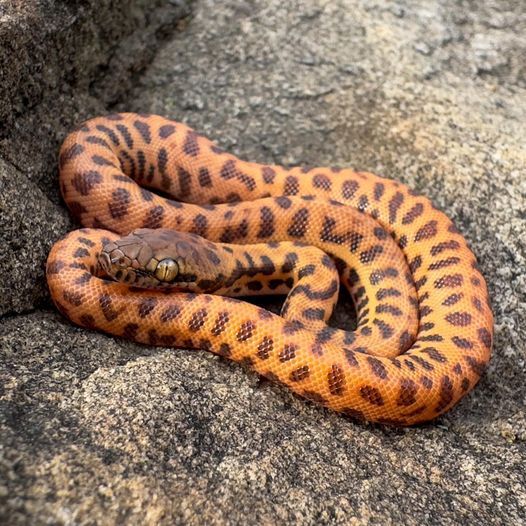
Children’s ("Stimson's") Python (Antaresia childreni), juvenile, family Pythonidae, Port Hedland region of the Pilbara, Western Australia
This population was formerly referred to as Stimson’s Python, but they are no longer considered to be a distinct subspecies. No subspecies are currently recognized for Children’s Python.
Some people do though consider Stimson's to be a distinct species, A. stimsoni.
photograph by Adam Brice
Is there anyone with a good knowledge of these snakes that could give us an opinion on the status of Stimson's Pythons?
253 notes
·
View notes
Text
Small Pets Catalogue:
(Current to 2/18/2024)
If there is no picture I plan to update with a picture. Pictures are of my actual pets and not representative.
-
REPTILES:
Smaug - Gargoyle Gecko - Rhacodactylus auriculatus - 3/2023 - Poss Female - F2.5 from F1 and F2 Parents - Future Breeding Prospect from Bowling Green State University reptile collection
Housing - Reptizoo 24x24x18in - Bioactive with “Temperate White Springtails” (unknown sp.), “Panda King“ Isopods (Cubaris sp.), Assorted Plants

Elton - Leopard Gecko - Eublepharis macularius - Birthdate Unknown, at least 7 years old - Female - Rescue, provenance unknown - Pet only
Housing - Exo Terra Large wide 36x18x-18in - Bioactive with Porcellionides pruinosus “Party Mix” isopods, Unknown sp. of Arid wild springtails that colonized and outcompeted the springtails I had introduced, and assorted plants.
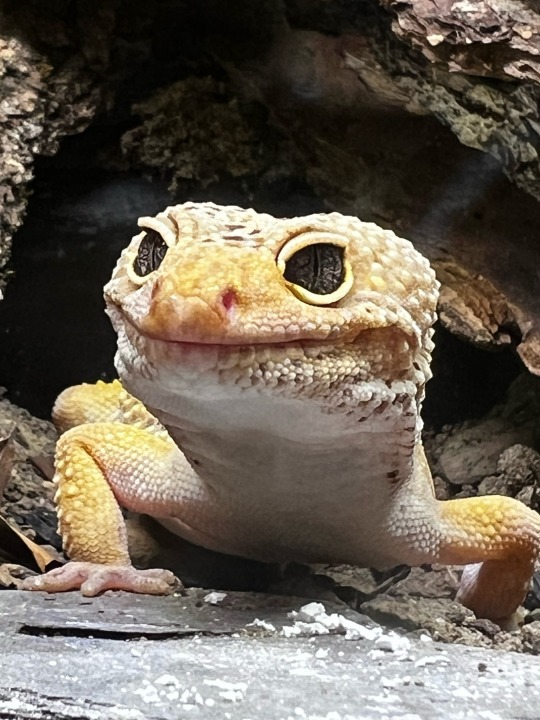
EVA - Children’s Python - Antaresia childreni - 5/2023 - Female - From E2Exotics on MorphMarket with untraced lineage - Pet only
Housing - S.E.S Series 4 PVC Enclosure 4x2x2ft Semi Bioactive With “Temperate White” (Unknown sp.) Springtails, currently cycling so I have not chosen the isopods yet.
Temporarily in grow out 20 gallon long tank on paper towel until she is large enough that she cannot escape through the gap in the door of the large enclosure.
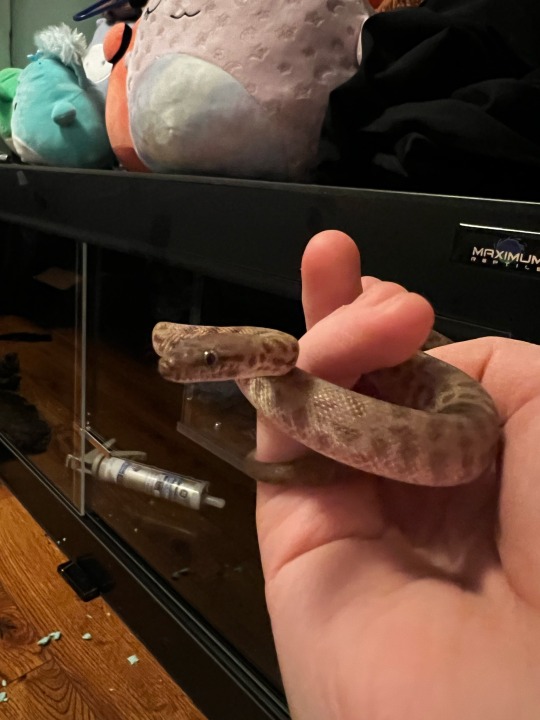
FISH
Sasuke - Betta Splendens - Young - Female - From Pet Supplies Plus - Pet only
Housing - Aqueon 5.5 gallon Rimless Fish Tank - Assorted Plants, Mystery Snail (Pomacea bridgesii), Pink Ramshorn Snails (Planorbella sp.)
INVERTS LISTED ON MY BUG BLOG
8 notes
·
View notes
Text
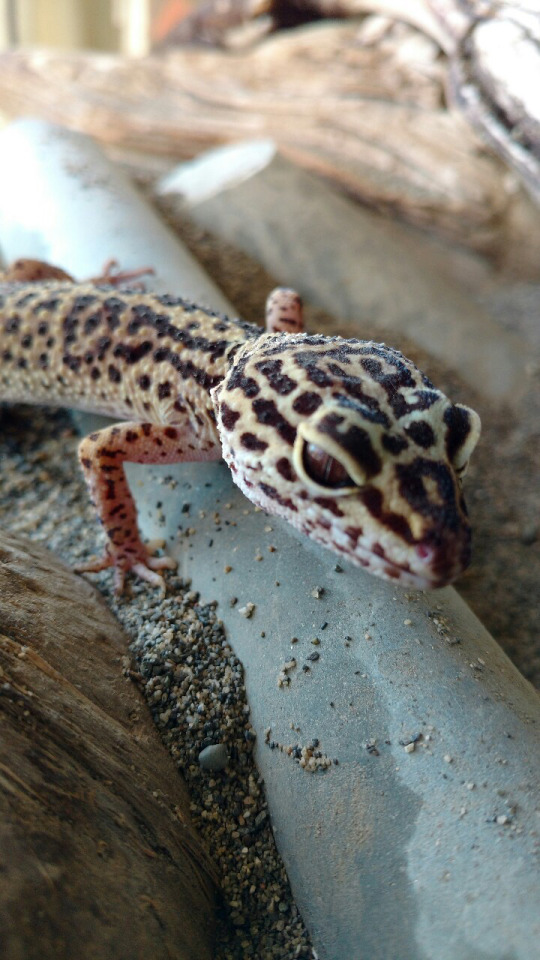
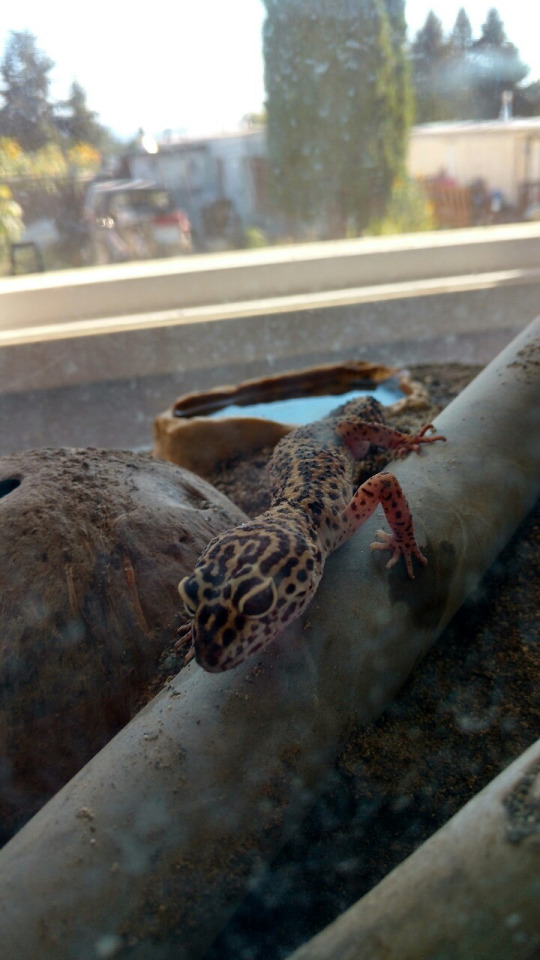

Just a few weeks before my mom passed away my 23+ year old female leopard gecko (Eublepharis macularis) Diego died too. Ever since I have been trying to figure out what to do with the enclosure that she left behind, and here are some of the ideas that I have come up with:
- Turn it back into the aquarium that it originally was; it could make for a rad freshwater species aquarium of zebra danios and beautiful blue freshwater shrimp, or it could be a second saltwater tank. Right now the thought of entering into another expensive-to-equip aquarium adventure makes me mentally hyperventilate though, especially when I still have yet to finish stocking my Fluval Evo reef tank which I've dubbed Purrling Reef. Sure the thought of a seahorse tank or an angler fish is fun but do I really want to enter into another aquatic pet like that at this time? Probably not!
- Get a small (male) snake! This is the original thing that I wanted to do but my mom wasn't on board with snakes. My dad? He's fine with it. So far the most likely species for me is the Plains Hognose (Heterodon nasicus,) Rosy Boa (Lichinura trivergata,) or the Anthill/Pygmy Python (Antaresia perthensis.) I am really not interested in Kenyan Sand Boas (Gongylophis colubrinus,) and I like that hognoses and rosy boas are both from North America - in fact the plains hognose is native to a few Canadian provinces! (Thankfully not mine though which means that hognoses are completely legal where I live, yay!) Rosy boas are unfortunately hard to find here, and so are pygmy pythons (which are from Australia, and not from the Perth region as their name seems to suggest.) Hognoses are easy to find - but only if you want a fancy colour morph, which I don't. I love the regular wild type morph of hognose but so far I haven't seen any available in Canada. (The fancy morphs are considerably more expensive, like $200+ more at least.)
Considering my hiking hobby a snake who as an adult only needs feeding once every 1-2 weeks and a clean, topped up water dish is pretty ideal. Top entry enclosures like mine aren't ideal for snakes (reaching down to grab them is too much like a bird of prey swooping down on top of them,) but I just need to check myself over how I reach for the snake friend. All three species of consideration are relatively docile, with the hognose being likely the best. Considering Clint's Reptiles and Wickens Wicked Reptiles' enclosure size recommendations I feel confident that Diego's 20 gallon long enclosure would be just fine especially for a male hognose (which is twice the size of the 10 gallon that some recommend.)
A garter snake would fit too however a larger enclosure would be better, especially so that I could keep more than one as unlike most other snakes, garter snakes are social beings who appreciate having garter snake friends.
Why specifically a male snake? Male snakes are significantly smaller than females.
I'm not interested in a tricolour hognose (Xenodon pulcher) as they do not live long enough. (5-8 years at best is ow, especially for an animal that would cost $400+ here. Nope, hard pass.)
- Get another lizard, but not a leopard gecko (nothing against my beautiful late Diego but I simply don't want another leopard gecko.) So far my favourite option for this is the completely gorgeous Schneider's Skink (Eumaces schneider.) At first I really wasn't considering another lizard but watching Reptiliatus' videos of feeding his tokay geckos made me realize that I actually really miss feeding Diego and watching her hunt her crickets. Skinks tend to be personable and friendly; I'm still researching what other options might exist.
Bonus points for ease of care for my dad whenever I'm away. He's probably more comfortable dumping a bunch of crickets into a lizard's home than feeding dead rodents to a snake if I am gone for a long time as I would be should I succeed someday in returning to Scotland to finish the Scottish National Trail (and potentially hike the Hebridean Way.)
- Stow away the 20 gallon and get a bigger enclosure for a larger reptillian friend. I'm not going to lie, a Ball Pythons (Python regius,) would be awesome and their particularly slow metabolism would be ideal for my thruhiking hobby (some adults only eat once every three weeks.) I also really like Pueblan Milksnakes (Lambropeltis triangulum campbelli,) and Arizona Mountain Kingsnakes (Lambropeltis pyromelana)! In fact, a Pueblan Milksnake is probably my dream snake - I'd feel happy every single time that I looked at that thing.
Alternatively I could adopt a tokay gecko (Gekko gecko) because they are not only beautiful but hilarious but since they are vocal geckos I'd probably have to keep it in my room.
Downside to an animal requiring a whole bigger enclosure: I'm not... financially well at the moment. This will change eventually, but right now? Right now things are hard.
But building an enclosure from scratch woukd also be really fun!
Wait, aren't fish really high maintenance? No, not really, not when you have automated systems in place like I do already and plan to add. An automatic feeder will eventually give my fish a daily breakfast meal of mixed pellets (currently a blend of Vitalis, Piscene Energetics, Fauna Marin and Northfin carnivore/clownfish diets,) an Automatic Top Off system guards my salinity against evaporation, my lighting is programmed with a full day/night cycle and an Inkbird temperature controller regulates the temperature of my water. My USB air pump will keep running and oxygenating my water for up to 36 hours in the event of a power outtage. All the coral species which I plan to keep are photosynthetic so they don't need to be fed actual food for their survival while I am away. My fish won't get any tasty frozen food when I am gone but they will have the pellets to munch on as well as the tiny live copepods which also call my reef home. For maintaining water chemistry I have extensive rockwork and porous media for biological filtration and I will soon be introducing macroalgae to one of my filter compartments. (Plants are the original filters and will - along with my future corals - lap up my nitrates and phosphates like greedy puppies.) Additionally, I have other plans for autominously maintaining other properties of my water and I will be purchasing a chiller before next summer (because fans suck at cooling aquarium water.)
If I do adopt another reptile I will be giving it UVB as well as a bioactive setup just like Diego had. Due to Keplar's very strong prey drive and my tendancy to deeply bond with my pets rodents are not on option for me as pets. I will be fortifying the terrarium similar to how I have fortified my reef tank against Keplar being a pest to my other animals.
I also have vague plans to build or buy some taller, better stands so that he can't go nose-to-nose with my non-feline pets anymore.
(Keplar is so cute but he is such a pest to non-feline organisms.)
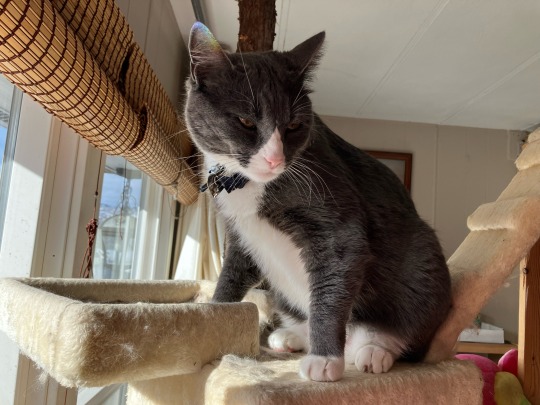
#musings#reptile#what to adopt#snake or lizard#plains hognose#rosy boa#ball python#pueblan milk snake#arizona mountain king snake#pygmy python#anthill python
3 notes
·
View notes
Text
Did you know the Pythonidae family is home to about 39 species? They live in Africa, Asia, and Australia. This family includes the famous Burmese python, with hundreds of thousands in Florida's Everglades. These snakes are big and interesting, and they play a big role in their ecosystems. We will explore the python family in detail. We'll look at their classification, behavior, where they live, what they eat, how they reproduce, their conservation status, and their relationship with humans. Key Takeaways The Pythonidae family contains around 39 species and 10 recognized genera. Burmese pythons are a significant introduced species in Florida, with around half a million individuals. Reticulated pythons are among the longest snakes, with some individuals measuring over 10 meters (32.8 feet). Pythons are known for their exceptional hunting techniques and possess heat-sensitive pit organs. This family of snakes lays eggs and, in most species, the females provide warmth to their clutch. Introduction to Pythonidae The Pythonidae overview shows us a fascinating family of snakes called pythons. They are nonvenomous and have about 3789 species. These snakes are among the biggest and strongest in the world. The reticulated python, the largest, can be over 30 feet long. The smallest python, Antaresia Perthensis, is just 24 inches long. This shows the wide range in size within the family. Pythons characteristics stand out in their physical traits. Adults usually weigh about 12 kilograms and are 3 to 6 feet long. Some can even reach up to 23 feet long. They don't have eyelids but have a transparent scale to protect their eyes. Their colors help them blend in with their surroundings, which is key to their survival. The python family introduction also highlights their unique way of reproducing. Female pythons lay between 2 to 100 eggs, depending on the species. After laying eggs, they protect them by coiling around them. Pythons can live for 25 to 35 years, which is quite long for reptiles. https://youtube.com/watch?v=fikJIxMKSeQ Pythons live in warm and wet places like rainforests, grasslands, and woodlands. They are found in Asia, Africa, Oceania, and Australia. But, many species are threatened by habitat loss and poaching. This is why some are listed as vulnerable on the IUCN Red List. What is the Python Family? The python family, known scientifically as Pythonidae, includes large, nonvenomous snakes. They are famous for their unique way of catching prey. This group has about 72 species and is divided into 14 living genera. The variety within the pythonidae classification shows their complex evolution and adaptability. Some well-known genera are Antaresia with six species and Morelia with ten. Others like Python and Liasis also have many species. Each genus has its own special traits, showing how they adapt to different places. Most pythons live in the tropics and subtropics. They can be found from sub-Saharan Africa to Southeast Asia and northern Australia. Unlike many snakes, female pythons lay eggs, which sets them apart from the Boidae family. Even though a few big pythons can be a concern, especially as pets, they are crucial to ecosystems. As nonvenomous snakes, they help keep their habitats healthy by controlling rodent and small mammal populations. GenusNumber of Species/SubspeciesAntaresia6Apodora1Aspidites2Bothrochilus1Leiopython3Liasis6Malayopython5Morelia10Nyctophilopython1Python13Simalia6 Classification of Pythonidae The pythonidae taxonomy is complex, with many genera that show the variety of this snake family. Important genera are Python, Morelia, and Antaresia. Each species is well-suited to its environment. The family has 44 recognized species, including four subspecies. This classification shows how pythons, sunbeam snakes, and some boas are related. Classification of snakes has changed over time. This has led to the discovery of new species and changes in how they are grouped.
Here is a detailed overview of some important genera and corresponding species within the Pythonidae family: GenusSpeciesCommon NamePictures AvailablePythonbrongersmaiRed Blood Python1PythonmolurusIndian Python3PythonregiusBall Python3PythonreticulatusReticulated Python2PythonsebaeAfrican Rock PythonInformation AvailablePythontimoriensisTimor PythonInformation Available The genus and species of pythons are key to understanding their evolution. New species are still being found, showing that we know only a small part of the family. Between 2000 and 2013, twelve new species were added to the classification. Studies have shown complex relationships among pythons, revealing a deep evolutionary history. Characteristics of Pythonidae The Pythonidae family stands out with unique traits. Their physical features and behaviors offer clues to their survival skills. Physical Features of Pythons Pythons are known for their strong muscles. These muscles help them squeeze their prey. They range from 1.5 feet to 33 feet long, showing a wide variety among species. Some pythons are over 20 feet long. Others, like the pygmy pythons, are less than 2 feet long. Here are some key physical traits: Robust muscular structure for effective hunting. Dual lungs—an ancient trait among snakes—allowing for efficient respiration. Backwards-facing teeth that enhance their ability to consume prey that is larger than themselves. Skin patterns that vary, with about one-third of species being almost patternless, and some capable of dramatic color changes. Behavioral Traits of Pythonidae Pythons hunt by ambushing their prey. They wait patiently and use camouflage to hide. Most live alone, fitting into different habitats like deserts, savannas, or rainforests. They are mostly active at night and defend themselves when threatened. Pythons mainly eat vertebrates like lizards, mammals, and birds. Attacks on humans are very rare. These traits show how pythons survive in various places. Distribution and Habitat of Pythons Pythons show how adaptable and resilient they are in different places. They live in many parts of sub-Saharan Africa, Southeast Asia, and Australia. These areas have various climates and ecosystems, showing how well these reptiles fit in. Global Range of Pythonidae Species Pythons live in both their natural and new homes. They can be found in: RegionStatusNearcticIntroducedPalearcticNativeOrientalNativeEthiopianNativeNeotropicalIntroducedAustralianNative Preferred Habitats of Pythons Pythons live in many different places, showing their adaptability. They like living in: Tropical Rainforests Temperate Forests Marshes and Swamps Bogs Grasslands Urban Areas Agricultural Lands They can live up to 1,200 to 2,500 meters (3,937 to 8,202 feet) high. Being good swimmers, they also live in wetlands and by the coast. The Burmese pythons in Florida show how they can move into new places. This highlights the need to understand where pythons live for conservation and management. Feeding and Nutrition in Pythonidae Pythons are skilled hunters known for their remarkable feeding habits. They use stealth, patience, and precise technique to hunt. This lets them thrive in diverse environments. Let's take a closer look at their hunting techniques and dietary preferences. Hunting Techniques of Pythons Pythons mainly use ambush tactics to catch their prey. They blend into their surroundings with excellent camouflage, waiting for animals to come close. Their hunting techniques include: Infrared Detection: Pythons have special heat-sensitive pits on their face. These pits help them detect infrared radiation from warm-blooded creatures. This helps them find prey even in complete darkness. Constriction: Once a python grabs its prey, it wraps its body around it to suffocate it before eating. Swallowing Technique: Pythons have a unique way of swallowing large prey. They produce mucus to help the prey go down their long throat.
Dietary Preferences of Python Species The diet of pythons varies by species and habitat. Generally, they eat: Prey TypeCommon ExamplesMammalsRats, mice, small deerBirdsChickens, wild birdsReptilesOther snakes, lizardsOccasional AmphibiansFrogs Pythons' diet is key to their growth and health. Getting the right nutrition helps them live up to 30 years with proper care. Knowing what they eat is important for both wild and captive pythons. Reproduction and Lifecycle of Pythonidae Pythons are fascinating snakes that lay eggs. They have unique ways of reproducing. The female python wraps her eggs to keep them at the right temperature for growth. This is called thermoregulation and shows how pythons adapt to their environment. The lifecycle of pythons includes several stages. Female ball pythons become ready to have babies between 27 and 31 months old. Males are ready a bit earlier, at 16 to 18 months. The eggs take about 44 to 54 days to develop, usually laid from mid-February to early April. Hatchlings come out from mid-April to mid-June, when it's best for their survival. The Burmese python has a different approach. They can lay up to 100 eggs at once. Female Burmese pythons become ready to have babies around 2 to 3 years old. Their eggs develop in just 2 to 3 months, which affects their numbers. Pythons can live a long time, up to 20 years in captivity. In the wild, they usually live about 10 years. Their long life, controlling rodent populations, and helping rural communities shows why we need to understand them better. SpeciesReproductive Maturity (Months)Gestation Period (Days)Clutch Size (Average)Average Lifespan (Years)Ball Python (Python regius)27-31 (Female), 16-18 (Male)44-544020 (Captivity)Burmese Python (Python molurus)24-36 (Both)60-9040-10015.8 (Captivity) Conservation Status of Pythonidae Many python species are in danger due to habitat loss, poaching, and illegal trade. For instance, reticulated pythons, the longest snakes, are at risk because they are popular pets and used in traditional medicine. Efforts to protect these endangered species include laws against illegal capture and promoting sustainable living in their habitats. Python protection is becoming more important, especially for the Indian python and ball python. The International Union for Conservation of Nature (IUCN) says reticulated pythons and ball pythons are not endangered. Ball pythons are doing well thanks to conservation efforts, even with the pet trade. But, we still need to be aware and take action. The wild ball python population is stable, but taking too many for pets could threaten their future. Python SpeciesConservation StatusLife ExpectancyEgg Clutch SizeThreatsReticulated PythonLeast Concern22 years in the wild, 32 years in captivity20-50 eggs (up to 100 recorded)Illegal trade, habitat loss, human conflictBall PythonLeast Concern20-30 years in captivity, shorter in the wild4-10 eggsPet trade, habitat degradation We need to work together to protect these amazing snakes. Governments, conservation groups, and the public must act. Supporting responsible pet ownership and avoiding wild-caught snakes is crucial for their future. Relationship Between Humans and Pythonidae Humans and pythons have a complex relationship. These snakes are seen as symbols of strength and resilience in many cultures. But, their relationship with humans can be both good and bad, especially in traditional medicine and the python trade. The Role of Pythons in Traditional Medicine In some cultures, pythons are seen as having healing properties. Different parts of the python are used for various treatments. This shows how deeply pythons are connected to local traditions and nature. Impact of Python Poaching and Trade The python trade has grown into a huge industry, driven by demand for their skins and meat. This has led to a big threat to their survival. Conservation efforts are working to reduce the harm of python trade and teach people why we need to protect these reptiles.
Conclusion This journey into the python family shows us how complex and important they are. These snakes play a key role in nature. They have many behaviors and adaptations that help keep ecosystems balanced. It's crucial to protect them as their homes are being destroyed and they are being hunted. There are 44 recognized species of Pythonidae, each with its own story to tell about evolution. Research is ongoing, and we might discover more about these snakes. Humans and pythons have a special connection, showing how important they are to us. We need to work together to protect pythons. By spreading the word about why they matter, we can help communities and leaders understand their value. This way, these amazing snakes can keep living in their natural world, helping our planet stay healthy and full of life. StatisticDataTotal Species in Pythonidae44 speciesNew Taxa Described (2000-2013)12 new taxaTaxonomic Coverage Range0.30% to 0.77%Geographical DistributionSub-Saharan Africa, Asia, Indonesia, Philippines, Papua New Guinea, AustraliaFirst Species DescriptionLinnaeus in 1758Total Identified by 19th Century13 species by 19th centuryTotal New Species in 20th Century15 speciesPotential New DiscoveriesExpected in Southeast AsiaHealth Benefits of Python MeatLow fat and cholesterolSustainability of Python FarmingLower environmental footprint References To understand the Pythonidae family, we need many research sources. Barker and Barker's work on taxonomy is key. They also look at where pythons live. Ashraf explores the geographical spread of pythons, adding to our knowledge. Studies like McDowell's catalogue of snakes show pythons' roles in their ecosystems. The variety of species mentioned highlights the need for conservation. References cover everything from the Burmese Python to Australian species. These studies stress the importance of protecting pythons. They inform us on how to monitor their habitats and breed them. They also talk about the challenges of climate change and invasive species. Research on Pythonidae shows we need to keep learning and protecting these reptiles. Using these sources helps us appreciate the Pythonidae family more. It's crucial for their survival. FAQ What are the main characteristics of the Pythonidae family? The Pythonidae family includes large, nonvenomous snakes. They are known for their strong muscles and unique looks. These snakes hunt by ambushing and have special teeth for eating large prey. How are Pythonidae species classified? Pythonidae species are classified into several genera like Python, Morelia, and Antaresia. Each species fits into a specific environment. Their classification shows how they are related to other snakes. Where are pythons primarily found? Pythons live mainly in sub-Saharan Africa, Southeast Asia, and Australia. They live in many places, from forests to grasslands. They are good swimmers and adjust to different climates. What do pythons eat? Pythons eat mammals, birds, and sometimes reptiles and amphibians. They hunt by ambushing and have a special way of swallowing their prey with the help of mucus. How do pythons reproduce? Pythons lay eggs that the female coils around to keep warm. This helps the eggs develop properly. What threats do Pythonidae face? Python species are threatened by habitat loss, hunting, and the illegal wildlife trade. We need conservation efforts to protect them and their homes. How do humans interact with pythons? Humans have many interactions with pythons, like using them in traditional medicine and trading their skins. But, poaching and exploitation threaten their survival. We need sustainable practices to help them.
0 notes
Text

A Children's python (Antaresia childreni) in Kimberley, Western Australia
by Ian Bool
#children's python#pythons#snakes#reptiles#antaresia childreni#antaresia#pythonidae#serpentes#squamata#reptilia#chordata#wildlife: australia
166 notes
·
View notes